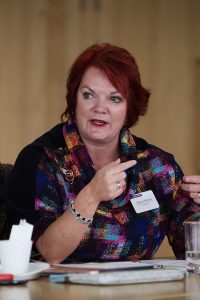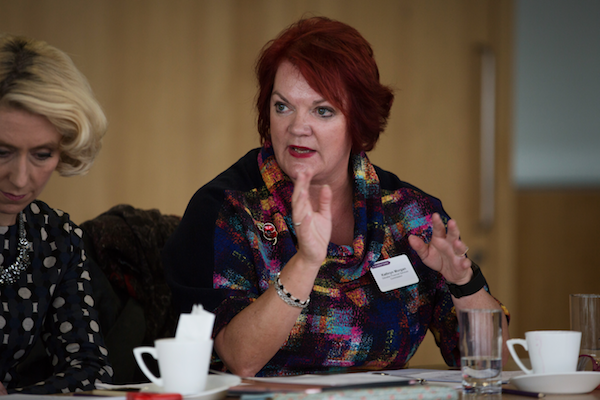
Kathryn Morgan, director of regulatory operations, Gibraltar Financial Services Commission on the importance of storytelling for tracking governance.
I’ve always been a big believer in storytelling – tales of actual experiences, however trivial, are much more engaging and bring dry situations and theories to life. So it was both encouraging and enlightening to hear that regulators in different industries use storytelling to understand the culture in the firms they regulate, and also to explain the purpose of the regulation.
The complexity, subjectivity and nuanced behaviour within firms mean that governance does not lend itself naturally to tracking and measuring. For a regulator trying to assess the quality of governance in a company, stories are a great way of understanding what is really going on.
[pullquote class=”right”]For a regulator trying to assess the quality of governance in a company, stories are a great way of understanding what is really going on.[/pullquote]We can all think of examples of companies with articulate and well-designed policies for every aspect of the organisation, where decisions can be made without reference to the policies, or outside the policy; often for very good reasons (speed being one).
What stories tell you about governance
Regulators often see only the policies, and take comfort from those. Talking to decision makers, or the documenters of decisions, hearing their stories can bring the policies to life, or show where they are not being followed. Stories can also show where policies are not working – which is useful for executives as well as regulators.
For me, hearing the stories companies tell is a way of understanding the culture of a firm. The way individuals speak about their actions and the description the company uses to tell you about itself can hold important clues to its approach to compliance. It can also be informative about its attitude to regulation and if it sees it as a useful tool to drive behaviour.
Explaining regulation

Story telling can help regulators to explain why particular rules are in place. I believe this is really useful, as the path from policy idea to implementation can be very long. Solvency II is a good example. Thinking started in the late nineties and the rules entered into force (with long transitionals) in 2016.
Insurance companies implementing the Directive quite rightly focused on the rules and standards. I do wonder if setting up Solvency II processes in the context of the original thinking in the Sharma report (with its strong focus on management failure as the root cause of all failures) and other papers would have improved the efficiency of complying and possibly, dare I say it, produced a more effective implementation.
Storytelling to work with the regulator

How can regulated firms use story telling in their dealings with regulators? Regulators are interested in how decisions are arrived at – what’s the thought process? What challenge was there?
[pullquote class=”left”]The stories companies tell is a way of understanding the culture of a firm.[/pullquote]Board minutes and papers will tell part of the story, and if the story of the decision is shared together with those, regulators will get a good feel for corporate behaviour. This is particularly helpful if different stories are told – stories about the same decision, for example, but from different perspectives. Do Board members feel as though they were heard in the discussion? Does the chair stimulate debate or quash it? Board minutes are (quite rightly) unlikely to give a verbatim report of a discussion, and definitely won’t capture the tone.
The following example shows how story telling could work in practice. This particular company had set up a sub-committee to develop ways of working together, a reasonable enough decision. But only after discussion with the Board members did the underlying reason for this emerge.
The chair of the Board refused to listen to certain directors as he didn’t want to hear opposing views. The Non-Executive Directors (NEDs) discussed outside the board meeting and agreed that they would speak to the chair one-on-one to explore his behaviour. This culminated in the Board setting up the sub-committee. As the sub-committee included the opposing factions, one of the NEDs joined to make sure people behaved respectfully (and had to call out some poor behaviour) and that the outcomes were reasonable and potentially acceptable to the Board. The Board minutes didn’t capture the emotions in the discussion or the tone in the sub-committee meetings, so storytelling from different points of view was helpful to understand the dynamics.
Where is the real power?

The Governance Trap discussion interestingly kept coming back to Boards – their behaviour, their culture, their decision making – and how what the Board does and doesn’t do, and what the Board decides, filters into all aspects of a company. I had been moving to a view that Executive committees are the main source of decisions and corporate culture. The discussion has made me start to rethink this. It is a subject worthy of further exploration.
Working for a regulator that oversees a variety of financial services companies in Gibraltar, it is clear to me that monitoring governance is not a science, and that the quality of governance can’t be scored, and that the stories of how governance is working (or not working) are a key resource for supervisors.
‘The Governance Trap: Tracking Behaviour and Change’ is the second event in a series of collaborations between Solvency II Wire and the Centre for Analysis of Risk and Regulation (CARR) at the London School of Economics.
The event was held in London on 3 November 2016, hosted by ![]() .
.
If you’d like to learn more about or read articles from the first event in this series, The Governance Trap and the Future of Regulation, please click here.
To receive the next article in the series directly to your inbox and subscribe to the Solvency II Wire mailing list for free, click here.





